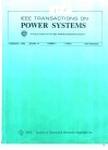版权所有:内蒙古大学图书馆 技术提供:维普资讯• 智图
内蒙古自治区呼和浩特市赛罕区大学西街235号 邮编: 010021

作者机构:Tsinghua University Department of Electrical Engineering Beijing100084 China Columbia University Department of Earth and Environmental Engineering NY10027 United States University of Vermont Department of Electrical and Biomedical Engineering BurlingtonVT05405 United States
出 版 物:《IEEE Transactions on Power Systems》 (IEEE Trans Power Syst)
年 卷 期:2024年第40卷第4期
页 面:3232-3246页
核心收录:
学科分类:0808[工学-电气工程] 08[工学] 0837[工学-安全科学与工程] 0835[工学-软件工程] 0714[理学-统计学(可授理学、经济学学位)] 0701[理学-数学] 0812[工学-计算机科学与技术(可授工学、理学学位)]
基 金:National Key Research and Development Program of China National Natural Science Foundation of China China Postdoctoral Science Foundation Special Funded Project National Science Foundation
主 题:Mixed integer linear programming
摘 要:Scenario reduction (SR) aims to identify a small yet representative scenario set to depict the underlying uncertainty, which is critical to scenario-based stochastic optimization (SBSO) of power systems. Existing SR techniques commonly aim to achieve statistical approximation to the original scenario set. However, SR and SBSO are commonly considered as two distinct and decoupled processes, which cannot guarantee a superior approximation of the original optimality. Instead, this paper incorporates the SBSO problem structure into the SR process and introduces a novel problem-driven scenario reduction (PDSR) framework. Specifically, we project the original scenario set in distribution space onto the mutual decision applicability between scenarios in problem space. Subsequently, the SR process, embedded by a distinctive problem-driven distance metric, is rendered as a mixed-integer linear programming formulation to obtain the representative scenario set while minimizing the optimality gap. Furthermore, ex-ante and ex-post problem-driven evaluation indices are proposed to evaluate the SR performance. Numerical experiments on two two-stage stochastic economic dispatch problems validate the effectiveness of PDSR, and demonstrate that PDSR significantly outperforms existing SR methods by identifying salient (e.g., worst-case) scenarios, and achieving an optimality gap of less than 0.1% within acceptable computation time. © 1969-2012 IEEE.